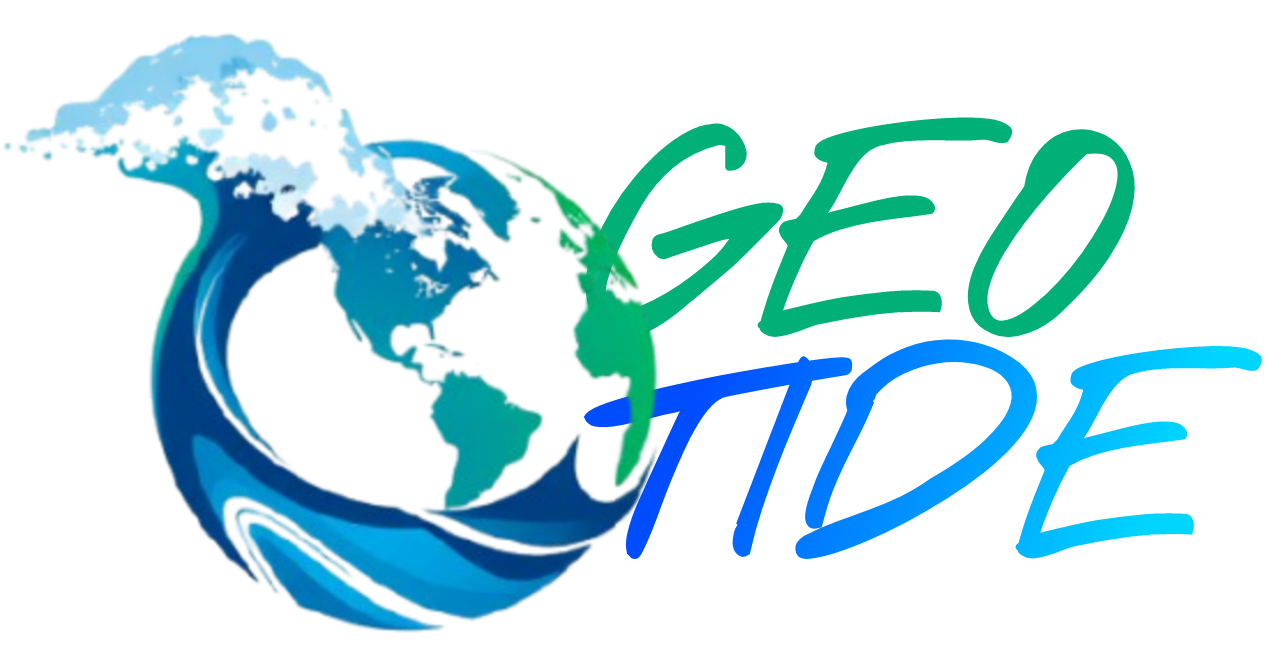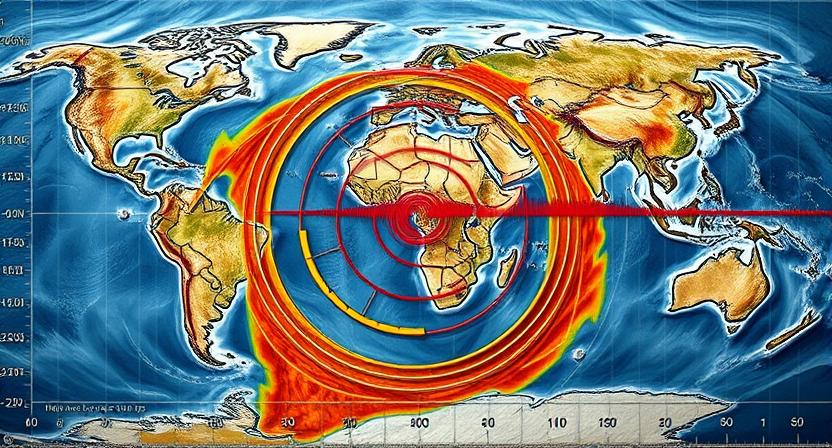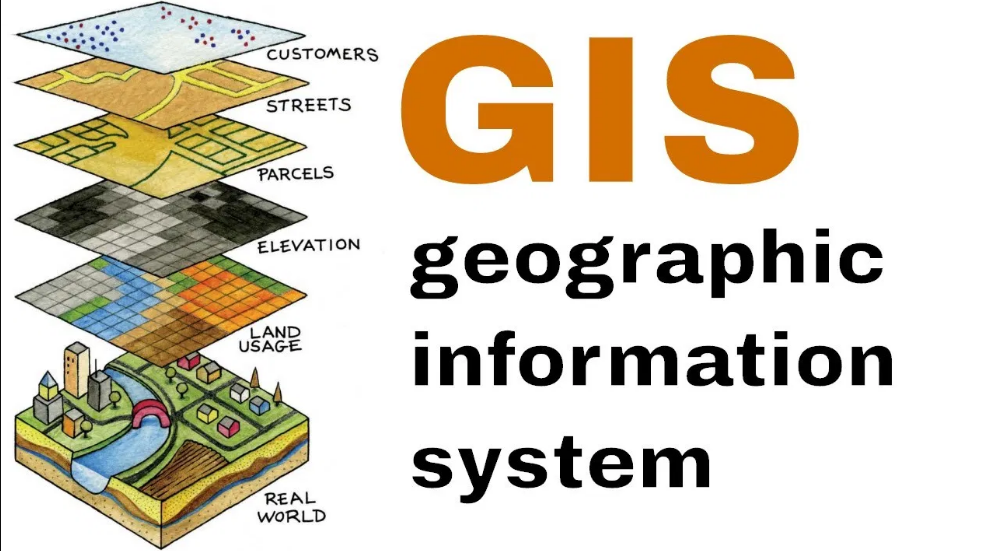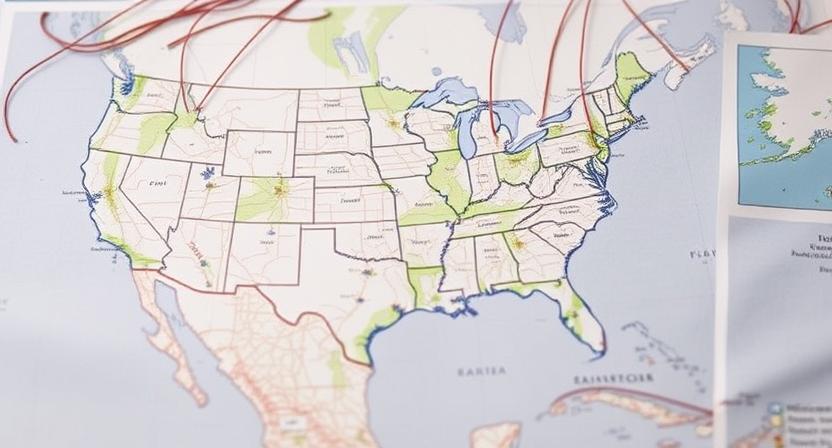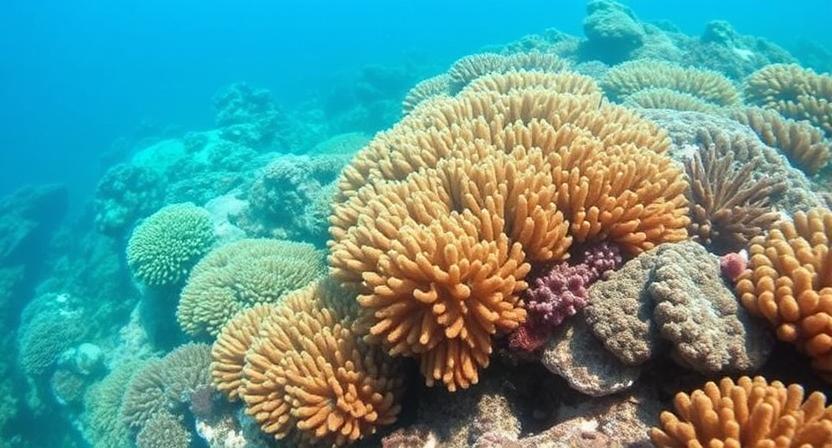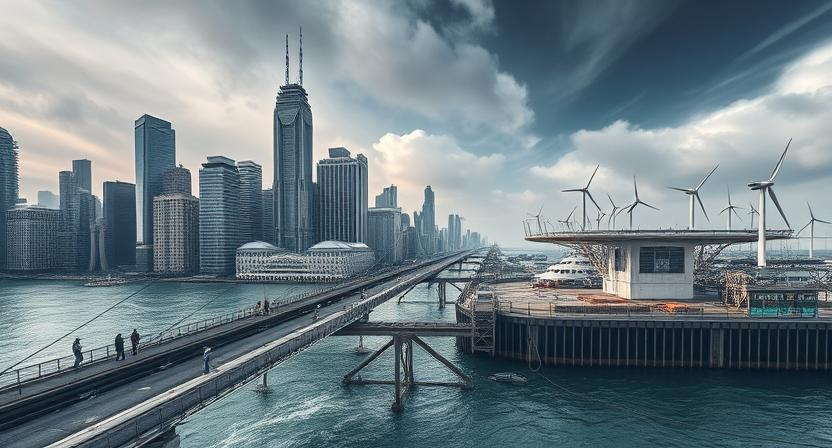
Rising Sea Levels and Climate Change

The phenomenon of rising sea levels is a critical issue that is intricately linked to the broader challenge of climate change. As global temperatures continue to rise, polar ice caps and glaciers are melting at an accelerated rate, leading to an increase in the volume of water entering the world’s oceans. These excess water volumes are contributing to the gradual but steady rise in sea levels observed across the globe, posing significant threats to coastal communities and ecosystems.
The impact of rising sea levels is far-reaching and multifaceted. Coastal cities are particularly vulnerable to the effects of sea level rise, facing risks such as flooding, erosion, and saltwater intrusion into freshwater sources. The deterioration of coastal land, saltwater contamination of groundwater, and disruptions to marine life are just some of the repercussions of this environmental shift. As sea levels continue to rise, the urgency to address the root causes of climate change becomes increasingly apparent in order to mitigate further escalation of this pressing issue.
• Coastal cities are at risk of flooding, erosion, and saltwater intrusion
• Coastal land is deteriorating due to rising sea levels
• Saltwater contamination of freshwater sources is increasing
• Disruptions to marine life are occurring as a result of sea level rise
The implications of rising sea levels extend beyond environmental concerns. Economic impacts are significant, with coastal infrastructure, industries, and economies facing threats from increased flooding and storm surges. Additionally, communities that rely on fisheries and tourism as primary sources of income may suffer from the decline in marine biodiversity caused by changing ocean conditions. Addressing climate change and implementing adaptation strategies are crucial steps in safeguarding both the environment and livelihoods threatened by rising sea levels.
Efforts to combat rising sea levels require a coordinated global response. International cooperation is essential in developing sustainable solutions that reduce greenhouse gas emissions, promote renewable energy sources, and enhance resilience to the impacts of climate change. By working together to address the root causes of rising sea levels and climate change, we can strive towards a more secure future for our planet and all its inhabitants.
Causes of Rising Sea Levels
The increase in global temperatures due to human activities is a key driver of rising sea levels. The burning of fossil fuels releases greenhouse gases like carbon dioxide into the atmosphere, trapping heat and causing the planet to warm up. This results in the melting of ice caps and glaciers, contributing to the expansion of seawater and the subsequent rise in sea levels.
Another factor leading to rising sea levels is the thermal expansion of seawater. As the Earth warms, the temperature of the oceans also rises, causing the water to expand. This expanded volume of water takes up more space, leading to a rise in sea levels worldwide. The combination of melting ice and thermal expansion poses a significant threat to coastal communities and ecosystems, highlighting the urgent need for global action to address the root causes of this phenomenon.
• The burning of fossil fuels releases greenhouse gases like carbon dioxide into the atmosphere
• Trapping heat and causing the planet to warm up
• Melting ice caps and glaciers contribute to the expansion of seawater
• Thermal expansion of seawater occurs as Earth warms, causing water volume to expand
Effects of Rising Sea Levels on Coastal Cities
Coastal cities are facing increasing threats as sea levels continue to rise due to climate change. The encroachment of seawater into urban areas poses a significant risk to infrastructure such as buildings, roads, and utilities. In addition, the erosion of coastal land exacerbates the vulnerability of these cities, leading to the loss of valuable real estate and threatening the livelihoods of residents.
Moreover, the rise in sea levels has repercussions beyond physical damages, as it also results in the salinization of groundwater. This contamination of freshwater sources hinders agricultural practices and endangers the health of local communities that rely on these resources. The impact on marine life is also profound, disrupting ecosystems and subsequently affecting the fishing industry upon which many coastal cities depend.
• Coastal cities are facing increasing threats as sea levels continue to rise due to climate change.
• The encroachment of seawater into urban areas poses a significant risk to infrastructure such as buildings, roads, and utilities.
• The erosion of coastal land exacerbates the vulnerability of these cities, leading to the loss of valuable real estate and threatening the livelihoods of residents.
• The rise in sea levels results in the salinization of groundwater, hindering agricultural practices and endangering local communities that rely on these resources.
• Contamination of freshwater sources also affects marine life, disrupting ecosystems and impacting the fishing industry upon which many coastal cities depend.
Threats to Infrastructure
Rising sea levels pose a formidable threat to vital infrastructure in coastal regions. The encroaching waters jeopardize roads, bridges, ports, and utilities, compromising the lifelines of communities. Existing structures are becoming increasingly vulnerable to damage and destruction as the sea levels continue to rise, requiring urgent attention and innovative solutions.
The risk of inundation from storm surges and high tides puts pressure on coastal infrastructure, amplifying the potential for widespread disruption and economic losses. Infrastructure such as wastewater treatment plants, power plants, and transportation systems are at risk of significant damage, disrupting essential services for residents and businesses alike. The imperative to adapt and strengthen coastal infrastructure is crucial to safeguarding the well-being and resilience of coastal communities.
• Rising sea levels jeopardize roads, bridges, ports, and utilities
• Existing structures are vulnerable to damage and destruction
• Urgent attention and innovative solutions are needed
• Risk of inundation from storm surges and high tides
• Pressure on coastal infrastructure amplifies potential for disruption
• Wastewater treatment plants, power plants, transportation systems at risk
• Adaptation and strengthening of coastal infrastructure is crucial
• Safeguarding well-being and resilience of coastal communities is imperative
Erosion of Coastal Land
Coastal land erosion poses a significant threat to coastal communities worldwide. As sea levels rise and storms become more frequent and intense due to climate change, the natural buffer provided by coastal land diminishes. This leads to increased erosion, exacerbating the risk of damage to infrastructure, loss of habitat, and threats to human safety.
The erosion of coastal land not only impacts the physical landscape but also has far-reaching consequences on the ecosystem. As coastlines recede, habitats for various plant and animal species are disrupted, leading to loss of biodiversity and potential extinction risks for vulnerable populations. Additionally, erosion contributes to the degradation of water quality and can trigger harmful algae blooms, further disrupting marine ecosystems.
• Coastal land erosion is a significant threat to coastal communities worldwide
• Sea levels rise and intense storms due to climate change exacerbate erosion
• Diminished natural buffer increases risk of infrastructure damage, habitat loss, and threats to human safety
• Erosion disrupts habitats for plant and animal species, leading to loss of biodiversity
• Potential extinction risks for vulnerable populations as coastlines recede
• Degradation of water quality and harmful algae blooms are triggered by erosion
Salinization of Groundwater

Salinization of groundwater poses a significant threat to coastal communities around the world. As sea levels rise, saltwater intrudes into freshwater aquifers, contaminating drinking water sources and rendering them unusable for agriculture. This can have dire consequences for both human populations and ecosystems that rely on these freshwater supplies for survival.
In addition to the immediate impacts on drinking water and agriculture, the salinization of groundwater can also lead to increased corrosion of infrastructure such as pipes and wells. This not only threatens the functionality of essential services like water supply systems but also adds to the financial burden of maintaining and replacing damaged infrastructure. Addressing the escalating salinization of groundwater will require comprehensive strategies that prioritize the conservation and sustainable management of freshwater resources in the face of rising sea levels.
• Salinization of groundwater is a significant threat to coastal communities
• Saltwater intrusion contaminates drinking water sources and affects agriculture
• Human populations and ecosystems rely on freshwater supplies for survival
• Corrosion of infrastructure like pipes and wells increases with salinization
• Comprehensive strategies are needed to address rising sea levels and conserve freshwater resources
Impact on Marine Life
The rise in sea levels due to climate change poses a significant threat to marine life around the world. As sea levels increase, coastal habitats critical for many marine species are being altered or lost entirely. Coral reefs, for example, face bleaching and increased vulnerability to damage from storms and erosion as the water warms and sea levels rise.
Furthermore, the changing sea levels impact the distribution and abundance of marine species, leading to disruptions in ecosystems and potential shifts in food chains. For migratory species, altered coastlines may obstruct traditional migration corridors or lead to the loss of essential breeding areas. This disruption can have cascading effects on entire marine ecosystems, potentially leading to declines in species diversity and overall ecosystem health.
• The rise in sea levels due to climate change poses a significant threat to marine life around the world.
• Coastal habitats critical for many marine species are being altered or lost entirely as sea levels increase.
• Coral reefs face bleaching and increased vulnerability to damage from storms and erosion as water warms and sea levels rise.
• Changing sea levels impact the distribution and abundance of marine species, leading to disruptions in ecosystems and potential shifts in food chains.
• Altered coastlines may obstruct traditional migration corridors or lead to the loss of essential breeding areas for migratory species.
• Disruption can have cascading effects on entire marine ecosystems, potentially leading to declines in species diversity and overall ecosystem health.
Displacement of Communities
Rising sea levels pose a significant threat to coastal communities around the world, leading to the displacement of many residents. As sea levels continue to rise due to the effects of climate change, low-lying areas are particularly vulnerable to flooding and coastal erosion. This has resulted in the forced relocation of communities that have called these areas home for generations.
The displacement of communities brings about a range of challenges, including the loss of homes, livelihoods, and cultural ties to the land. In many cases, residents are left with no choice but to leave their homes behind and start anew in safer locations further inland. This disruption can have long-lasting impacts on the social fabric of these communities, as residents must adapt to unfamiliar surroundings and rebuild their lives from the ground up.
• Displacement due to rising sea levels is a global issue affecting coastal communities
• Low-lying areas are at higher risk of flooding and erosion, leading to forced relocation
• Challenges include loss of homes, livelihoods, and cultural connections to the land
• Residents often have to start over in new locations further inland
• Social fabric of communities can be deeply impacted by such displacements
Economic Consequences
The economic consequences of rising sea levels are becoming increasingly evident as coastal cities grapple with the financial implications of climate change. From damage to infrastructure and loss of property values to disruptions in tourism and fishing industries, the financial toll is substantial. Businesses and governments alike are facing mounting costs to fortify coastal areas against the encroaching waters, leading to budget strains and tough decisions on where to allocate resources.
As sea levels continue to rise, the economic impacts are expected to escalate, affecting not only coastal regions but also the broader economy. Insurance premiums are soaring for properties at risk of flooding, while investments in resilience measures are consuming resources that could have been used for other development projects. The ripple effects of these economic challenges extend beyond just the coastal areas, reverberating through supply chains and markets, highlighting the interconnectedness of our global economy in the face of climate change.
• Coastal cities are facing damage to infrastructure and loss of property values
• Disruptions in tourism and fishing industries are occurring
• Businesses and governments are struggling with mounting costs to fortify coastal areas
• Insurance premiums for properties at risk of flooding are increasing
• Investments in resilience measures are diverting resources from other development projects
Increased Flooding Events
Increased flooding events are becoming more frequent and severe due to rising sea levels caused by climate change. Coastal cities around the world are experiencing the devastating impacts of flooding, as storm surges overwhelm infrastructure and inundate urban areas. The combination of higher sea levels and more intense rainfall is exacerbating the risk of flooding, posing significant challenges for city planning and long-term sustainability goals.
Communities living in low-lying coastal areas are particularly vulnerable to increased flooding events, as rising waters encroach upon residential areas and vital economic hubs. The need for adaptation strategies and investment in resilience measures is paramount to mitigate the impacts of these flooding events and protect vulnerable populations. As cities grapple with the dual challenges of urban development and climate change, innovative solutions and international cooperation will be essential in building a more resilient future in the face of escalating flooding risks.
• Coastal cities are experiencing devastating impacts of flooding
• Rising sea levels and intense rainfall exacerbate flood risk
• Communities in low-lying coastal areas are highly vulnerable to flooding events
• Adaptation strategies and resilience measures are crucial for mitigating impacts
• International cooperation and innovative solutions necessary for building a resilient future
Challenges for City Planning

City planning faces significant hurdles in the wake of rising sea levels caused by climate change. The primary challenge lies in balancing the need for sustainable urban development with the urgent imperative to adapt to changing environmental conditions. Identifying areas at highest risk of flooding and erosion and effectively managing land use in these vulnerable zones is a complex puzzle for planners to solve.
Furthermore, the long lead times required for implementing large-scale infrastructure projects clash with the pressing immediacy of the threats posed by rising sea levels. The need for coordinated action among multiple stakeholders, including government agencies, private developers, and community members, adds another layer of complexity to the already intricate task of city planning in the face of climate change.
• Identifying areas at highest risk of flooding and erosion
• Managing land use in vulnerable zones effectively
• Balancing sustainable urban development with environmental adaptation needs
City planners must also navigate the challenges posed by limited resources and funding constraints. The high costs associated with implementing resilient infrastructure, such as seawalls or green spaces to absorb excess water, can strain municipal budgets already stretched thin by competing priorities. Securing financing for these projects requires innovative solutions and collaboration across sectors to pool resources and expertise.
In addition, social equity considerations must be integrated into city planning efforts to ensure that vulnerable populations are not disproportionately affected by rising sea levels. Providing affordable housing options outside flood-prone areas and improving access to transportation for low-income residents are just a few examples of strategies that can help address this issue. Collaboration with community organizations and advocacy groups is essential to ensure that all voices are heard in the decision-making process.
• Limited resources and funding constraints
• High costs associated with resilient infrastructure implementation
• Social equity considerations in city planning efforts
Adaptation Strategies
One key adaptation strategy for coastal cities facing the threat of rising sea levels is the implementation of nature-based solutions. These solutions involve restoring and preserving natural coastal habitats such as mangroves, wetlands, and dunes to act as buffers against flooding and erosion. By working with nature rather than against it, cities can enhance their resilience to the impacts of climate change.
In addition to nature-based solutions, incorporating green infrastructure into urban planning can help mitigate the effects of rising sea levels. Green roofs, permeable pavements, and rain gardens are examples of green infrastructure that can absorb and redirect stormwater, reducing the risk of flooding in coastal areas. By integrating green spaces into the built environment, cities can not only enhance their adaptation efforts but also improve overall livability for their residents.
• Nature-based solutions involve restoring and preserving natural coastal habitats
• Mangroves, wetlands, and dunes act as buffers against flooding and erosion
• Working with nature enhances resilience to climate change impacts
• Green infrastructure in urban planning can mitigate effects of rising sea levels
• Green roofs, permeable pavements, rain gardens absorb and redirect stormwater
• Integration of green spaces improves adaptation efforts and livability for residents
Investment in Resilience Measures
Investing in resilience measures is crucial for mitigating the impacts of rising sea levels and climate change on coastal cities. By implementing infrastructure upgrades, early warning systems, and conservation efforts, communities can better withstand the challenges posed by sea level rise. These investments not only protect lives and property, but also contribute to the long-term sustainability and prosperity of coastal regions.
Furthermore, allocating resources towards research and development of innovative solutions can lead to more effective adaptation strategies. By fostering collaboration between scientists, engineers, policymakers, and community leaders, investments in resilience measures can drive forward progress in addressing the complex challenges of a changing climate.
• Infrastructure upgrades such as seawalls and drainage systems can help protect coastal cities from flooding
• Early warning systems can provide crucial information to residents and authorities to prepare for extreme weather events
• Conservation efforts, such as mangrove restoration, can help buffer coastlines against erosion and storm surges
• Research and development of innovative solutions can lead to more effective adaptation strategies
• Collaboration between scientists, engineers, policymakers, and community leaders is essential for driving progress in addressing climate change challenges
Policy Implications
Policymakers are faced with the critical task of creating and implementing effective measures to address the challenges posed by rising sea levels due to climate change. The urgency of the situation calls for swift action to mitigate the impacts on coastal communities and ecosystems. It is imperative for governments at all levels to prioritize sustainable policies that promote resilience and adaptation in the face of ongoing environmental shifts.
Policy implications should encompass a holistic approach that considers the interconnected nature of the issue, involving collaboration across sectors and jurisdictions. Inclusivity in decision-making processes and the incorporation of diverse perspectives are essential to developing comprehensive strategies that can withstand the test of time. Additionally, policy frameworks need to be flexible and adaptive to accommodate evolving climate patterns and ensure long-term sustainability for future generations.
• Policymakers must prioritize sustainable policies to address rising sea levels
• Collaboration across sectors and jurisdictions is crucial for effective policy implementation
• Inclusivity in decision-making processes is essential for developing comprehensive strategies
• Policy frameworks should be flexible and adaptive to accommodate evolving climate patterns
International Cooperation
International cooperation plays a crucial role in addressing the global challenge of rising sea levels due to climate change. By fostering partnerships between countries, sharing data, and implementing joint mitigation and adaptation strategies, nations can work towards a sustainable future for coastal regions around the world. Through collaborative efforts, countries can enhance their resilience to the impacts of rising sea levels and ensure the protection of vulnerable communities and ecosystems.
Effective international cooperation also facilitates the exchange of best practices and innovative solutions to combat the threats posed by rising sea levels. By working together, countries can leverage each other’s expertise and resources to develop comprehensive strategies that encompass not only immediate responses to the current challenges but also long-term sustainability goals. In this interconnected world, solidarity and coordination among nations are key to tackling the complex issues stemming from the changing climate and its consequences on coastal areas.
• International cooperation is essential in addressing rising sea levels due to climate change
• Partnerships between countries can lead to shared data and joint mitigation strategies
• Collaborative efforts enhance resilience and protect vulnerable communities and ecosystems
• Exchange of best practices and innovative solutions is facilitated through international cooperation
• Solidarity and coordination among nations are crucial for tackling complex issues stemming from climate change
Role of Technology in Mitigation

In the face of rising sea levels attributed to climate change, technology plays a crucial role in mitigating the impacts on coastal regions. Advanced monitoring systems equipped with sensors and satellite data enable real-time tracking of sea level rise and potential threats to infrastructure. In addition, innovative engineering solutions such as seawalls, flood gates, and artificial reefs are being developed to protect coastal cities from the increasing frequency of flooding events.
Further advancements in technology focus on sustainable practices to reduce carbon emissions and slow down the rate of global warming, thus indirectly contributing to the stabilization of sea levels. In particular, renewable energy sources like solar and wind power offer a cleaner alternative to fossil fuels, leading to a decrease in greenhouse gas emissions. Moreover, research into carbon capture and storage technologies strives to remove carbon dioxide from the atmosphere, ultimately aiming to curb the temperature rise and subsequent sea level elevation.
• Monitoring systems equipped with sensors and satellite data enable real-time tracking of sea level rise
• Innovative engineering solutions such as seawalls, flood gates, and artificial reefs are being developed to protect coastal cities
• Advancements in technology focus on sustainable practices to reduce carbon emissions
• Renewable energy sources like solar and wind power offer a cleaner alternative to fossil fuels
• Research into carbon capture and storage technologies strives to remove carbon dioxide from the atmosphere
Community Engagement in Adaptation Efforts
Community engagement plays a crucial role in the success of adaptation efforts to combat the challenges posed by rising sea levels. By involving local communities in decision-making processes and seeking their input, it ensures that strategies are culturally sensitive and reflective of the needs and concerns of those directly impacted. When community members are actively engaged and empowered to participate in planning and implementation, it fosters a sense of ownership and responsibility, leading to more sustainable and effective solutions.
Moreover, community engagement can help build social cohesion and resilience within neighborhoods facing the threats of sea-level rise. By creating opportunities for dialogue, knowledge-sharing, and collaboration, it strengthens bonds among residents and promotes collective action towards adaptation measures. This shared sense of responsibility and unity not only enhances the effectiveness of adaptation efforts but also promotes a sense of solidarity and mutual support in the face of environmental challenges.
• Community engagement ensures strategies are culturally sensitive and reflective of needs
• Empowering community members fosters ownership and responsibility for solutions
• Building social cohesion and resilience through dialogue, knowledge-sharing, and collaboration
• Strengthening bonds among residents promotes collective action towards adaptation measures
• Shared sense of responsibility enhances effectiveness of adaptation efforts
Awareness and Education Initiatives
Awareness and education initiatives play a crucial role in addressing the challenges posed by rising sea levels and climate change. By increasing public understanding of the causes and impacts of these issues, communities can better prepare and adapt to the inevitable changes that lie ahead. Through targeted informational campaigns, workshops, and educational programs, individuals can be empowered to take action in their own lives and advocate for systemic change.
Educating the younger generation is particularly important in building a sustainable future. By integrating climate change and sea level rise into school curriculums, students can develop a strong foundation of knowledge and a sense of responsibility towards the environment. In addition, engaging with local communities through outreach events and media campaigns can help raise awareness and foster a sense of collective action in the fight against climate change.
• Awareness and education initiatives are essential in addressing challenges posed by rising sea levels and climate change
• Public understanding of causes and impacts can help communities prepare and adapt to changes
• Targeted campaigns, workshops, and educational programs empower individuals to take action and advocate for systemic change
• Educating the younger generation is crucial for building a sustainable future
• Integrating climate change into school curriculums helps students develop knowledge and responsibility towards the environment
• Engaging with local communities through outreach events and media campaigns raises awareness and fosters collective action against climate change
Long-term Sustainability Goals
Long-term sustainability goals are crucial in the fight against the impacts of rising sea levels and climate change. These goals encompass strategies for reducing greenhouse gas emissions, preserving natural ecosystems, and promoting resilient urban infrastructure. By setting clear objectives for long-term sustainability, communities and governments can work towards a more secure future for generations to come.
Achieving long-term sustainability goals requires a collaborative effort from various stakeholders, including policymakers, scientists, businesses, and individuals. This collective action is essential to implement effective mitigation and adaptation measures that can protect coastal cities, ecosystems, and communities from the threats posed by rising sea levels. By prioritizing sustainability in decision-making processes and investments, we can strive towards a more resilient and sustainable future for our planet.
• Long-term sustainability goals are crucial in the fight against rising sea levels and climate change
• Strategies include reducing greenhouse gas emissions, preserving natural ecosystems, and promoting resilient urban infrastructure
• Setting clear objectives for long-term sustainability allows communities to work towards a more secure future
• Achieving these goals requires collaboration from policymakers, scientists, businesses, and individuals
• Collective action is essential to implement effective mitigation and adaptation measures
• Prioritizing sustainability in decision-making processes and investments can lead to a more resilient future
Hope for a Resilient Future
Despite the challenges posed by rising sea levels and climate change, there is hope for a resilient future. Communities around the world are increasingly recognizing the importance of proactive measures to mitigate the impacts of coastal flooding and erosion. By investing in sustainable infrastructure, implementing effective adaptation strategies, and fostering international cooperation, we can work towards building a more resilient and adaptive society.
As awareness of the threats posed by rising sea levels grows, so does the commitment to finding innovative solutions. Through the use of technology, such as advanced early warning systems and green infrastructure initiatives, we can bolster our defenses against the effects of climate change on coastal regions. By engaging with communities, fostering education and awareness, and setting long-term sustainability goals, we can cultivate a future where coastal cities are better prepared to withstand the challenges ahead.
• Investing in sustainable infrastructure
• Implementing effective adaptation strategies
• Fostering international cooperation
Despite the challenges posed by rising sea levels and climate change, there is hope for a resilient future. Communities around the world are increasingly recognizing the importance of proactive measures to mitigate the impacts of coastal flooding and erosion. By investing in sustainable infrastructure, implementing effective adaptation strategies, and fostering international cooperation, we can work towards building a more resilient and adaptive society.
As awareness of the threats posed by rising sea levels grows, so does the commitment to finding innovative solutions. Through the use of technology, such as advanced early warning systems and green infrastructure initiatives, we can bolster our defenses against the effects of climate change on coastal regions. By engaging with communities, fostering education and awareness, and setting long-term sustainability goals, we can cultivate a future where coastal cities are better prepared to withstand the challenges ahead.
